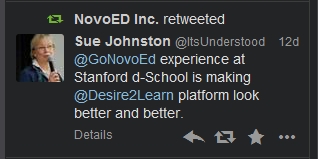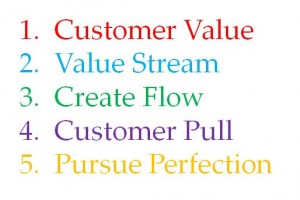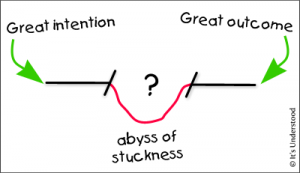by Susan Johnston | Nov 3, 2014 | Rants, Ramblings and Riddles |
 I spent some time, last week, entangled in a discussion about the meaning of words. I had used the words “intention,” “goal” and “objective” interchangeably to mean whatever a person being coached might want to be, do, have or happen. That was causing someone confusion.
I spent some time, last week, entangled in a discussion about the meaning of words. I had used the words “intention,” “goal” and “objective” interchangeably to mean whatever a person being coached might want to be, do, have or happen. That was causing someone confusion.
His confusion made me sad. And maybe a little guilty. How could I, someone who pitches clear, conscious communication, be so casual about the meaning of something as fundamental in coaching as a goal. Or is it an objective? An intention?
But had I really transgressed? In coaching, we’re helping people identify what they really want. What matters is not what we call that, but what they call it. Our job is to find out how important it is to them. What they’re willing to give – or give up – to make it happen. We can only do that through asking questions that reveal how they think and feel about it.
If we rely on our meaning of words, or the dictionary definition, or the generally accepted meaning in our profession or culture, we aren’t serving our clients. We need to know what it means to them – and why it matters.
 Still with words and meanings – in another conversation, we were bemoaning the use of the word “transformation” in the context of organizational change. On the continuum of degrees of change, from “tweak” on up, “transformation” seems pretty close to the max.
Still with words and meanings – in another conversation, we were bemoaning the use of the word “transformation” in the context of organizational change. On the continuum of degrees of change, from “tweak” on up, “transformation” seems pretty close to the max.
And what does transformation imply? Everything about everything changes. Transformation is what happens to a caterpillar when it turns into a butterfly. It happens to you. Transformation is what happens when a wicked witch turns a handsome prince into a frog. And magic is sometimes involved. Abra-cadabra. Throw a little agile pixie dust around and transform your organization.
Organizational transformation is more like a home renovation. Everything’s disrupted for a while. It’s a mess. Bits of the structure are unusable. But we put up with it, because we know we’re going to get a better place to live.
When we talk to people at work about “organizational transformation” or “agile transformation,” most people – including us – don’t know what we’re talking about. It’s too big, too vague, too unseen, too magical. Let’s talk about renovation. Everyone’s seen at least one – and lived through it. It’s something real, familiar, manageable, and within our grasp.
Words create our world – or at least our understanding of it. Sometimes precision matters. Sometimes it doesn’t. What always matters is finding a word that has meaning for the person we’re talking with.
by Susan Johnston | Aug 12, 2013 | Rants, Ramblings and Riddles |
I recently posted: “Google before you Tweet” is the new “Think before you Speak.” Since things posted on the Internet are forever, I thought I’d remind myself and others that it’s good to verify your information before pontificating. (I have snopes.com on speed dial.)
The same is true for reading the content before we share on facebook or retweet a link. Actually reading and checking what we post can preserve the illusion that we are intelligent beings. Otherwise we risk sharing something incorrect or inappropriate or pass on, as truth, satire from The Onion or Mooscleans.
Being asle ep at the wheel when you are posting as yourself is merely embarrassing. But when you’re posting on behalf of an organization, it’s criminal not to have your brain in gear. So I was puzzled, today, to see a retweet of something I posted a couple of weeks ago.
ep at the wheel when you are posting as yourself is merely embarrassing. But when you’re posting on behalf of an organization, it’s criminal not to have your brain in gear. So I was puzzled, today, to see a retweet of something I posted a couple of weeks ago.
Is this an organization rubbishing itself? Or is someone simply not reading and thinking before posting?
NovoED is the learning platform for an online course I’m taking. (A MOOC with thousands of participants.) Desire2Learn, based in my community, would seem to be a rival in the ed-tech space. (Yes, I Googled that before pontificating.) So why would NovoED repeat a plug for D2L?
(more…)
by Susan Johnston | Jul 13, 2013 | Build your own skills, Rants, Ramblings and Riddles |
 I’m getting lean. Alas, this is not about my body. It’s something I’ll call “lean communication.” I’m not about to preach on short sentences and plain words, though that can be part of it. I’m convinced that good communication reduces waste.
I’m getting lean. Alas, this is not about my body. It’s something I’ll call “lean communication.” I’m not about to preach on short sentences and plain words, though that can be part of it. I’m convinced that good communication reduces waste.
In manufacturing, the concept of “lean” describes practices that use fewer resources to provide greater value to customers. Anything customers don’t value enough to pay for is considered “waste,” something to eliminate. Lean practices originated in manufacturing in the 1940s, when Taiichi Ohno introduced them at Toyota. Over the years, they’ve been adopted and adapted in many contexts, including lean startups and lean software development.
When I look at the ideas I use with my communication coaching clients, I see a lot of overlap with lean principles, particularly those set out by the Lean Enterprise Institute. I’ve paraphrased them, but you can find the original version here.
1. Establish value from the customer’s perspective
This is my top tip for communication. I never tire of sharing it because it works so well. The audience for any communication might be considered your “customers.” The more you can make your communication about them and their needs, the more likely you are to be listened to, heard and understood. Whether you’re addressing one person or 100, in conversation, in presentations, in broadcast or in writing, you can almost never go wrong if you explain your point from the perspective of your audience. You make people care about your message by answering their question, “What’s in it for me?” (WIFM) That’s the value will it have for them. When you talk about anything they don’t value – no matter how much you love it – you waste your time and theirs. (more…)
by Susan Johnston | Apr 14, 2013 | Rants, Ramblings and Riddles |
 In a lifetime of working in, studying and observing human communication, I’ve learned enough to fill about 100 books. If I had to distill it all into one actionable idea, it would be, “Make it about the audience.”
In a lifetime of working in, studying and observing human communication, I’ve learned enough to fill about 100 books. If I had to distill it all into one actionable idea, it would be, “Make it about the audience.”
This advice is as useful when you’re talking to one person as it is when you’re presenting to a crowd. It also works when you’re creating marketing material, running a meeting, writing an annual report or sending a note to your babysitter.
It’s a paradox. As business people, we’re communicating about our products or services. Or we might be looking for support for our idea in a meeting or giving instructions to employees. Our business. Our ideas. Our stuff. Doesn’t the communication have to be about us and what we want?
The answer is, “Not really.” The chance of someone understanding you – and doing what you’d like them to – is greater when you design the communication around them and their needs.
Who is your audience? What interests them? What do they need to hear? What do they think they know? What do you want them to do? Why should they care? Thinking about the answers to these questions as you create and deliver your message increases the chances you will reach the people you’re talking to and that they’ll understand your message. (more…)
by Susan Johnston | Apr 8, 2013 | Build your own skills, Rants, Ramblings and Riddles |
Originally posted at the International Association Of Coaching
 For over 30 years, I’ve been a communication professional. Educated, mentored, accredited and experienced in every form of communication, I looked like the real deal. Yet it wasn’t until I trained as a coach that I truly learned to communicate.
For over 30 years, I’ve been a communication professional. Educated, mentored, accredited and experienced in every form of communication, I looked like the real deal. Yet it wasn’t until I trained as a coach that I truly learned to communicate.
I was working in corporate communication when I had the disturbing realization that how people talk to each other at work has more impact than the formal programs to which I was devoting my career. Fortunately, I met a coach. Being coached gave me an appreciation for deliberate and conscious conversation. Coach training gave me the tools. It forever changed the way I talk with everyone.
I learned to look beyond the story.
In earlier days, when I talked to people, I looked for the story. For daily news, it had to inform or entertain. For organizations, it had to line up with some corporate objective. Today, whether or not I am coaching, my focus is on the person behind the story. The more I focus on the person, the more interesting our conversation becomes. My attention builds the trust that helps people feel comfortable sharing their stories.
In coaching, I learned that the story someone brings me – the “presenting problem” – is not always the real issue. Probing for clarification has been just as useful in revealing what’s really going on with colleagues, family members and acquaintances as it has for clients. (more…)
by Andrew | Sep 20, 2010 | Build your own skills, Rants, Ramblings and Riddles |
 The number one killer of great outcomes is being stuck between “saying” and “doing.” Because I’ve been prone to this particular dysfunction, I’ve collected a vast assortment of observations that addresses the painfully obvious gap between intention and outcome. There are many reasons for the gap. Most have their roots in some degree of fear: failure, ridicule, scorn, criticism…name your pet fear. Many introverts, who have advanced skills in negative self-talk (not a good thing), are adept at getting stuck. If talking yourself out of doing thing things is a common experience for you, I highly recommend reading Dr. Rick Carlson’s classic “Taming Your Gremlin” which offers pithy and useful advice on this front.
The number one killer of great outcomes is being stuck between “saying” and “doing.” Because I’ve been prone to this particular dysfunction, I’ve collected a vast assortment of observations that addresses the painfully obvious gap between intention and outcome. There are many reasons for the gap. Most have their roots in some degree of fear: failure, ridicule, scorn, criticism…name your pet fear. Many introverts, who have advanced skills in negative self-talk (not a good thing), are adept at getting stuck. If talking yourself out of doing thing things is a common experience for you, I highly recommend reading Dr. Rick Carlson’s classic “Taming Your Gremlin” which offers pithy and useful advice on this front.
Seth Godin writes frequently and fiercely on the subject of getting out of your own way. His recent post, “The Myth of Preparation” is a call to action for all of us who hesitate to put our ideas into the world until they are perfect. And his short but powerful book “The Dip” focuses on the inevitable challenges in pursuing new ventures to completion.
There are useful lessons to be learned from Agile methods of software development: Chunk work into manageable portions, strive for the minimum value proposition, ship (i.e., get it out there) and repeat. Iteration and accumulation of usefulness goes a long way to overcoming the delays imposed by attempting to design the perfect complete thing before acting.
If design is not your issue but mastery (and it’s sidekick, credibility) I suggest we listen to Seth and get over it. Here’s an idea worth repeating frequently to calm your misgivings :
“Anything worth doing is worth doing poorly–until you can learn to do it well.” — Zig Ziglar
Ideas only have value when acted upon. Commitments to yourself and, especially, others without action are beyond unhelpful. Being stuck in inaction furthers no one’s cause. So do something about whatever is on your mind, however small. It would be a start, bridge that gap and get you closer to the outcome you desire.
 I spent some time, last week, entangled in a discussion about the meaning of words. I had used the words “intention,” “goal” and “objective” interchangeably to mean whatever a person being coached might want to be, do, have or happen. That was causing someone confusion.
I spent some time, last week, entangled in a discussion about the meaning of words. I had used the words “intention,” “goal” and “objective” interchangeably to mean whatever a person being coached might want to be, do, have or happen. That was causing someone confusion. Still with words and meanings – in another conversation, we were bemoaning the use of the word “transformation” in the context of organizational change. On the continuum of degrees of change, from “tweak” on up, “transformation” seems pretty close to the max.
Still with words and meanings – in another conversation, we were bemoaning the use of the word “transformation” in the context of organizational change. On the continuum of degrees of change, from “tweak” on up, “transformation” seems pretty close to the max.




